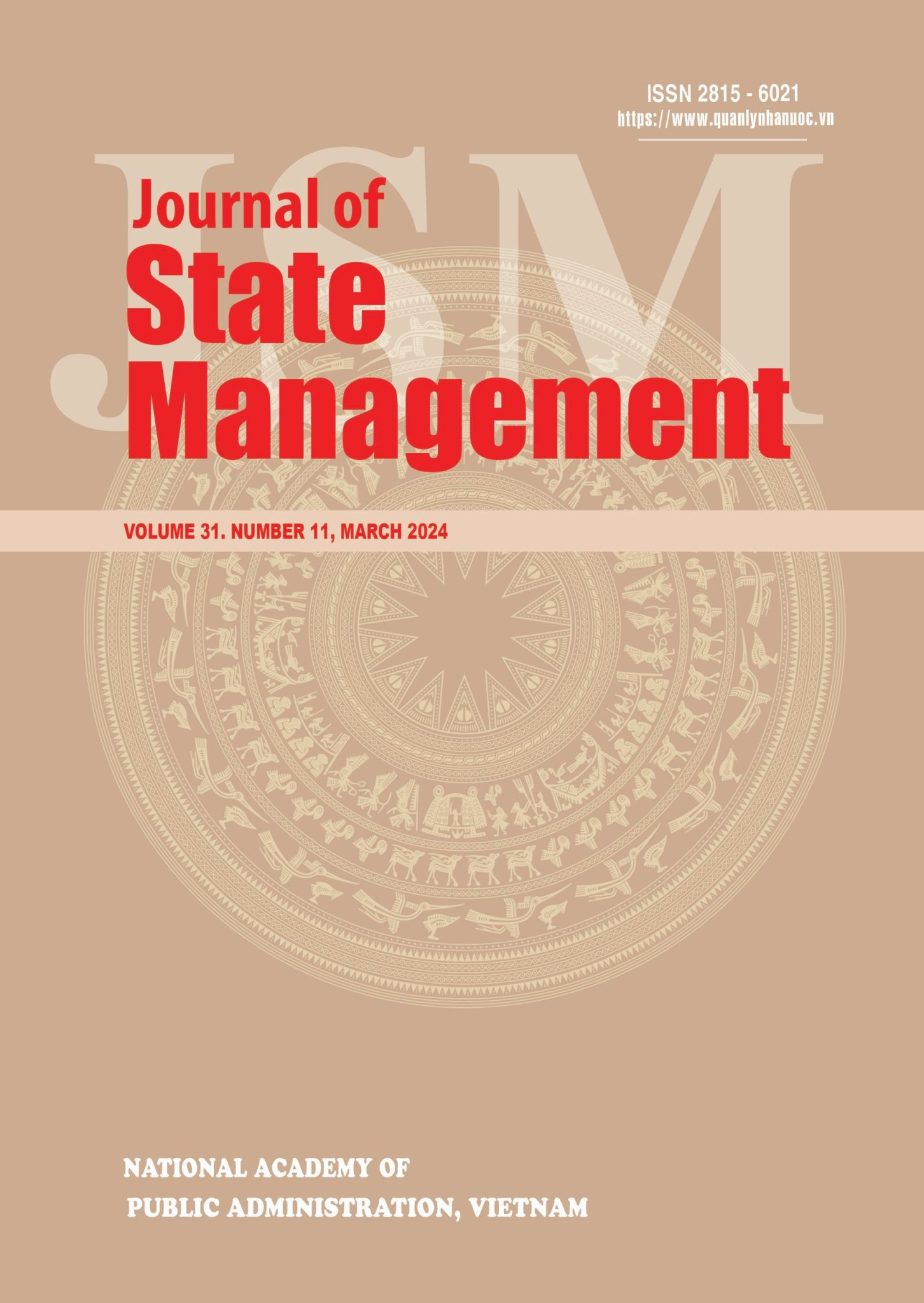Comparing job satisfaction among lecturers in public and non-public universities: Insights from Vietnam
DOI:
https://doi.org/10.59394/JSM.37Keywords:
Public universities, non-public universities, lecturers, comparison, job satisfaction, VietnamAbstract
This research examines job satisfaction among lecturers at public universities in Vietnam and compares it with that of lecturers at non-public universities. The findings reveal that salary, job nature, development opportunities, recognition, relationships, environment, and working conditions significantly influence job satisfaction. However, the impact of these factors varies between public and non-public university lecturers. The study underscores that lecturers’ job satisfaction is crucial for university success, influencing the quality of tertiary education and fostering innovation.References
Bentley,P.J.,Coates,H.,Dobson,I.R.,Goedegebuure, L.,&Meek,V.L.(2013). Introduction: Satisfaction around the world? In Job Satisfaction around the Academic World (pp. 1–11).
Bentley,P.J.,Coates,H.,Dobson,I.R.,Goedegebuure, L., & Meek, V. L. (2015). Academic job satisfaction from an international comparative perspective.
Castellacci, F., & Viñas-Bardolet, C. (2021). Permanent contracts and job satisfaction in academia:
Assoc. Prof. Dr. Phuong Huu Tung - National Academy of Public Administrationevidence from European countries. In Studies in Higher Education (Vol. 46, Issue 9, pp. 1866-1880).
Cristobal, E., Flavian, C., & Guinaliu, M. (2007). Perceived e-service quality (PeSQ) measurement validation and effects on consumer satisfaction and website loyalty. Managing Service Quality: An International Journal, 17(7), 317-340.
Cross, D. (1973). The Worker Opinion Survey: A measure of shop-floor satisfaction. Occupational Psychology, 47(3-4).
Dormann, C. F., Elith, J., Bacher, S., Buchmann, C., Carl, G., Carré, G., Marquéz, J. R. G., Gruber, B., Lafourcade, B., Leitão, P. J., Münkemüller, T., Mcclean, C., Osborne, P. E., Reineking, B., Schröder, B., Skidmore, A. K., Zurell, D., & Lautenbach, S. (2013). Collinearity: A review of methods to deal with it and a simulation study evaluating their performance.
Fields, D.L. (2002). Taking the Measure of Work: A Guide to Validated Scales for Organizational Research and Diagnosis. Sage Publications. Thousand Oaks.
Gessesse, K. T., & Premanandam, P. (2023). Job satisfaction among academic employees in private and public sector universities at Addis Ababa, Ethiopia: A comparative analysis. In Cogent Social Sciences (Vol. 9, Issue 1).
Hackman,J.R.,&Oldham,G.R.(1975).Development of the Job Diagnostic Survey. Journal of Applied Psychology.
Hagedorn, L. S. (2000). Conceptualizing Faculty Job Satisfaction: Components, Theories, and Outcomes. New Directions for Institutional Research, 2000 (105), 5-20.
Hair, J.F., Black, W.C., Babin, B.J. & Anderson, R. E. (2010). Multivariate Data Analysis. 7th Edition, Pearson.
Herzberg, F., Mausner, B. & Snyderman, B. B. (1993). The Motivation to Work. New Brunswick.
Transaction Publishers.
Khaleque, A, & Rahman, M. (1987). Perceived
importance of job facets and overall job satisfaction of industrial workers. Human Relations, 40, 401-416.
Lacy, F. J., & Sheehan, B. A. (1997). Job Satisfaction among Academic Staff: An International Perspective.
Higher Education, pp. 34, 305-322.
Lacy, N. L., Paulman, A., & Reuter, M. D. (2004).
Why we don’t come. Patient perceptions on no- shows. Annals of Family Medicine, 2, 541-545.
Macdonald,S.,&Maclntyre,P.(1997). The Generic
Job Satisfaction Scale. Employee Assistance Quarterly.
Maslow, A. (1954). Motivation and personality. In New York, NY: Harper.
Miller, K. (2003). Values, attitudes, and job
satisfaction. In Robbins, Odendaal & Roodt (Eds.), Organizational behavior - global and South African perspectives. Cape Town: Pearson Education South Africa.
Monnapula-Mapesela,L.(2002). Staff satisfaction in a South African University transforming. Unpublished doctoral thesis. Bloemfontein: University of the Free State.
Nguyen, T.M.H. (2019). Forgotten recognition and rewards: Evidence from an empirical survey on employee loyalty at some businesses and organizations in Hanoi. Journal of Trade Science, 135/2019, 61.
Rebello, M. M. & G. (2013). Academic Work at the Periphery: Why Argentine Scholars Are Satisfied, Despite All. In Job Satisfaction around the Academic World (pp. 13-28). Springer Science+Business Media Dordrecht.
Scarpello, V., & Campbell, J. P. (1983). Job satisfaction: Are all the parts there? Personnel Psychology, 36(3), 577-600. Retrieved from https://doi.org/10.1111/j.1744-6570.1983.tb02236.x
Smith, P. C., Kendall, L. M., & Hulin, C. L. (1969). The Measurement of Satisfaction in Work and Retirement: A Strategy for the Study of Attitudes. In Rand McNally Psychology Series.
Spector, P. E. (2022). Job satisfaction: from assessment to intervention.
Ssesanga, K., & Garrett, R. M. (2005). Job satisfaction of university academics: Perspectives from Uganda. Higher Education, 50 (1).
Taylor, D. L., & Tashakkori, A. (1995). Decision Participation and School Climate as Predictors of Job Satisfaction and Teachers’ Sense of Efficacy.
Weiss,H.M.(2002).DeconstructingJobSatisfaction: Separating Evaluations, Beliefs, and Affective Experiences. Human Resource Management Review, pp. 12, 173–194.
Yamane, Y. (1967). Mathematical Formulae for Sample Size Determination. Statistics: an Introductory Analysis, 2nd Edition, New York: Harper and Row.
Yuzuk, R. P. (1961). The Assessment of Employee Morale: A Comparison of Two Measures. Bureau of Business Research, College of Commerce and Administration, Ohio State University. Retrieved from https://books.google.com.vn/books? id=NEQPAQAAMAAJ



